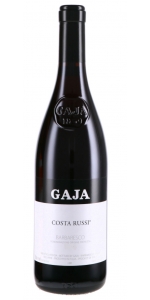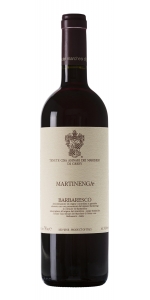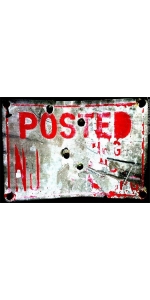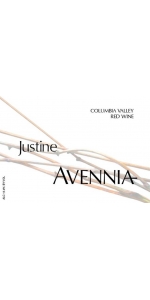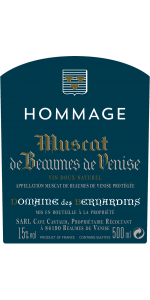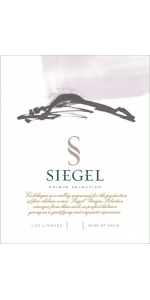Prunotto Barbaresco 2016
| Country: | Italy |
| Regions: | Piemonte Barbaresco |
| Winery: | Prunotto |
| Grape Type: | Nebbiolo |
| Vintage: | 2016 |
| Bottle Size: | 750 ml |
Gaja Costa Russi Nebbiolo is made from 100 percent Nebbiolo.
Costa (Italian for the side of the hill facing the sun) Russi (the nickname of the former owner) is ruby red in color, with a captivating aroma of blackberries, violets and roasted coffee beans. The purity of the palate is layered with dark fruit flavors and complex tannins.
STYLE: Complex, Elegant
FLAVOR: Blackberry, Violet, Roasted Coffee Beans
Review:
The 2016 Barbaresco Costa Russi is a more floral, sappy Barbaresco, offering textbook notes of black cherries, rose petals, sappy herbs, and violets. It's one of the more vibrant, juicy, and perfumed wines in the lineup and has medium to full body, bright yet integrated acidity, and the same incredibly polished yet certainly present tannins found in all these 2016s. This is another elegant 2016 that never puts a foot wrong.
-Jeb Dunnuck 98+ Points
The 2016 Barbaresco Costa Russi is ripe, creamy and enveloping, as it so often is, and yet also preserves the super classic sense of structure that runs through all these wines. In 2016, Costa Russi has an extra touch of mid-palate sweetness that gives the wine its sense of immediacy. Succulent red cherry, rosewater, kirsch, mint and dried flowers meld together in the glass. Soft and sensual, with tons of allure, Costa Russi is another winner from Gaja. Time in the glass brings out the wine's density and tannins, both of which it has in spades.
- Antonio Galloni 98
This delicate red features floral, strawberry, cherry, currant and loamy earth aromas and flavors, showing terrific balance. A line of firm tannins adds support, and the finish is long and expansive. Best from 2023 through 2045. 175 cases imported.
-Wine Spectator 97 Points
All older vintage wines have been purchased from a single collectors cellar. Pictures can be requested before shipment.
Tenute Cisa Asinari Marchesi di Gresy Gaiun Martinenga Barbaresco 2016.
Bright garnet red with slight orange reflections. Intense and pleasant hints of plum and cherry blend sinuously with balsamic nuances of mint, tea leaves, dried flowers and blond pipe tobacco.
No Syrah terroir in Sonoma County compares with Sonoma Mountain’s northwest crown—cool fog-affected mornings, sun-bathed afternoons, cooled by persistent coastal breezes, and temperate evenings. The soils in Steiner’s Syrah blocks — ashy and moondust-like, littered with decomposing sea bed — further contribute to the unique nature of this site. After a 3-vintage hiatus, I am thrilled to be back working with Steiner Vineyard’s Syrah. By its nature, this slow-to-ripen, cool-climate site produces fabulously deep, intense, structured wines. Now, raising a big, brawny Syrah is no rare act of alchemy. It is the wonder of Steiner’s terroir — a magical elegance and beauty, informing the inherent power, depth and intensity — that makes this bottling so special. 2016 produced a classic wine that deftly balances massive flavors and texture, while retaining vital freshness, and a palpable sense of cool. Production was low, so get it while you can. Simply a “WOW” wine, not to be missed.
VINEYARD: Steiner Vineyard. Located at 1,100 ft, on the northwest crown of Sonoma Mountain. CRUSH: Early morning harvest by hand, October 1st, cluster and berry sorted, destemmed and crushed. FERMENT: 5-day cold soaks, followed by 14 day native fermentation in open-top bins. AGING: 20 months, French oak, 100% new, mixture of 300L hogsheads and barrique shapes. Never racked prior to bottling. Bottled unfined, unfiltered.
Review:
"Refined and stylish, featuring a complex core wrapped in multilayered blackberry and blueberry flavors, laced with bitter chocolate, black licorice and smoky meat notes. Drink now through 2030.- Tim FISH"
- Wine Spectator Insider (January 15th 2020), 93 PTS
Avennia Justine Red Blend 56% Grenache, 31% Mourvèdre, 13% Syrah
Justine reflects our belief that Washington is capable of producing world class blends of grape varieties traditional to the Southern Rhone region of France. The name is inspired by one of the great heroines of recent literature, who also sprung from the imagination of the Mediterranean. Dark, seductive, complex, with a chasm of depth: The Justine is a great reflection of Avennia's mission of expression, and Washington's generous terroir.
Tasting Note: Big black cherry, blackberry, hints of orange peel, fresh herbs and loam on the nose. Plush and round on the palate. Dark earthy fruits from the Mourvedre, along with citrus high notes, mountain flowers, jasmine, and savory herbs. Balanced and complex without forgetting its hedonistic roots in the Southern Rhone.
Review:
A blend of 56% Grenache, 31% Mourvèdre, 13% Syrah brought up all in older oak, the 2016 Justine offers a great core of black fruits as well as lots of peppery herbs, earth, and classic meatiness. It looks to be a great vintage for this cuvée."
- Jeb Dunnuck (April 2018), 92-94 pts
Avennia Red Willow Cabernet Sauvignon is made from 100% Cabernet Sauvignon.
The Red Willow Cabernet is a true blockbuster.
Coming from one specific block of 30 year old vines at this iconic vineyard, then strictly barrel selected, this is the essence of powerful, old vine Washington Cabernet. After all of our efforts promoting the idea of the Bordeaux blend, it would take a pretty compelling argument to suspend that idea and make a 100% varietal Cabernet. In 2016 Red Willow provided us with just that. Each time we tasted it in the barrel, the belief grew that this was something special. Something we can't make every year. In the end we were won over, and decided to make a limited amount of this wine. But don't be fooled, as this too is a blend and a selection. Each year as we are tasting the grapes as harvest approaches, we notice that the vines near the bottom of this long, steep west-facing slope, are a little different. The vines at the bottom are in a little richer soil, and get a little more water, so we pick them separately, sometimes even a week or ten days apart, and keep them separate in barrel.
This wine is all from the top of the vineyard, with its lower yield and poorer soils giving more concentration and interest. Then further, nearly every combination of new and used French oak barrels were trialed to find the best blend. It's not enough just to use the four best barrels, but to trial each combination to see how they complement each other. For a wine with this much mass, 100% new French oak was used for the first time at Avennia. It is a wine that needs a little cellaring to start, but should last a very long time.
Review:
"The 2016 Cabernet Sauvignon Red Willow Vineyard is 100% Red Willow Cabernet Sauvignon that will spend roughly 20 months in close to 100% new French oak. Blackcurrants, smoked herbs, chocolate, and graphite notes all give way to a full-bodied, plump, rich, concentrated effort that's going to be better with short-term cellaring and keep for two decades."
- Jeb Dunnuck (April 2018), 94-96 pts
Prunotto Barbaresco is made from 100 percent Nebbiolo.
Prunotto’s Barbaresco is produced from vineyards in Treiso and Neive in the Barbaresco area, it’s the elegant expression of Nebbiolo. An aristocratic wine yet accessible and pleasant. It is aged in large oak barrels of varying capacities to enhance balance and softness on the palate.
Review:
Delicate floral and red fruit aromas and flavors peek through the eucalyptus, tar and tobacco notes and muscular profile of this red, though it will take some time for them to emerge and occupy center stage. This version is balanced, elegant and long in the end. Best from 2023 through 2040. 800 cases imported. -94 Points Wine Spectator
Cantina Sociale Ai Vini delle Langhe, a winemaking co-op, was incorporated in 1904 in the city council room of Serralunga's Town Hall presided by Mr. Giacomo Oddero, a notary public and a youthful Alfredo Prunotto as a witness. Among those present at the ceremony were prominent citizens who made important contributions to the history of Alba and the surrounding communities, as well as many small local producers. The first harvest took place in 1905. Unfortunately the following years were burdened by an uncertain economic trend worsened by the effects of the First World War.
On the deadline for renewal of the Cantina Social’s by-laws in 1922, many of its members changed their minds and no longer delivered their grapes to the co-op. The vintage was exceptional but was not abundant. The winery began to have serious financial difficulties and was put into liquidation. In the middle of this predicament, Alfredo Prunotto met and married Luigina. Together they decided to take over the Ai Vini delle Langhe co-op and gave it their name. Their dedication and passion soon made the winery famous and it began exporting Barolo and Barbaresco all over the globe: first to South America and then to The United States, two markets that had recently opened to foreign trade. Prunotto was one of the few companies that believed in this commercial strategy.
In 1956, Alfredo Prunotto decided to retire and he sold the company to wine technician and friend Beppe Colla who was assisted by Carlo Filiberti and later by his brother Tino Colla. As early as 1961, the owners of Prunotto began to identify specific production areas, well-know vineyards of excellence, and began single vineyard vinification to produce the very best crus such as Barolo Bussia and Barbera d’Alba Pian Romualdo.In 1972, a new winery was designed by architect Ugo della Piana, a native of this northern area of Piedmont. The winery was built near the city of Alba where Prunotto's main offices are still located today.
The Antinori family first became involved with the Prunotto winery in 1989 initially handling distribution and then in 1994, when the Colla brothers decided to retire, they took over production upholding the excellent quality standards that Alfredo Prunotto successfully achieved. The winery's production philosophy, always extremely attentive to details and deeply passionate about wine, brought Prunotto and the Antinori family together to face a new challenge: to explore and develop the potential of this new terroir where both local and international varieties can express the area's remarkable territorial identity. In 1990 this project took shape when Albiera Antinori, Marchese Piero Antinori’s eldest daughter, further defined the winery's personality by concentrating on the vineyards: the first was the Bussia vineyard, one of the most prestigious in the Barolo area followed by Costamiòle in Agliano to produce Nizza, and land in Calliano for research and development for introducing vines new to this area such as Albarossa and Syrah.
A captivating panorama with its beautiful rolling hillsides and small sloping valleys wrapped with rows of vines. A territory that is both fascinating and inviting not only for its natural landscape, distinctive colors and the peace and quiet that prevails but also for its historical heritage and cultural traditions that are part of its unique character. Alba is a charming town with Baroque and Renaissance buildings and a series of medieval towers that were built by the city’s noble families. The entire region, with its vineyards, castles and medieval hamlets, safeguards one of the most important and unique artistic and architectural patrimonies in Piedmont. The estate covers an area of approximately 65 hectares (161 acres) with vineyards in the very best wine producing zones in the region. Careful, attentive vineyard management is the most important fundamental value in winemaking. Only top quality grapes can produce great wines that are able to express the grape variety’s personality and territorial identity.
The winery represents the perfect balance between tradition and innovation using state-of-the-art technology to express and interpret the many nuances of this historic winemaking territory. Prunotto’s vineyards extend over an area of approximately 65 hectares (161 acres) in the territories of The Langhe and Monferrato and are subdivided into smaller parcels of land and single vineyards where great red wines are produced. Respectful of regional traditions, white wines are also crafted such as Moscato d’Asti and Arneis as well as an innovative rosé and two brands of grappa, one from Barolo Bussia and one from Barbera d’Asti Costamiòle. Prunotto conducts studies, research and development and actively carries out experimentation in the vineyards without any pre-planned formulas. Particular attention is given to promoting sustainable agriculture and improving manual techniques. Each year and each harvest are unique and for this reason Prunotto’s winemaking team evaluates the best timing and techniques for vineyard management and for the production of each vintage respecting varietal characteristics while expressing its finest potential. Progress in the cellars is always preceded by developments in the vineyards.
New projects were introduced after detailed soil studies that provided valuable indications for choosing rootstocks and the best clones able to adapt to each parcel, favoring the expression of their vineyard of origin. The most important historical production areas are Bussia, Bussia Vigna Colonnello, Costamiòle, Bansella, Bric Turot, Pian Romualdo and Occhetti. Prunotto’s production philosophy has always been directed towards progress, continuous advancements in our cellars and in aging techniques, a constant challenge to achieve the finest quality. A new winery was built in 1999, adjacent to the historic offices designed by architect Della Piana in the 1970’s, exclusively for vinification and aging. This project was pivotal for expanding and improving the winery's facilities where all stages of production take place. This temperature-controlled facility maintains constant temperatures throughout the year and guarantees perfect storing and aging conditions. For production of Barolo, Barbaresco and Nebbiolo, the older 100-hectoliter Slavonian oak barrels, in use since the 1970's, have been replaced with large Allier and Slavonian oak barrels in 27, 32, 53 and 77 hectoliter sizes, formats that are more suitable to bring out the potential of each individual vineyard and assist each wine to achieve its greatest expression. Over the years, we have also replaced the outdated cement vats with stainless steel tanks that are able to preserve the grapes’ characteristic aromas and fragrances. The new vertical vinification tanks are also stainless steel and are lower in height with a larger diameter allowing for greater contact of the skins with the juice during fermentation.
Bernardins Muscat de Beaumes de Venise Hommage is made from 75% Muscat petits grains blancs, 25% Muscat petits grains noirs.
The wine shows a golden hue with orangy highlights. Endearing nose of grape, orange peel and a honeyed accent. Mild at point of entry, spendid aromatic intensity, sultana, candied orange, rose petal and refined spice. Our Muscat de Beaumes de Venise has a great age ability.
For every vintage of our Muscat de Beaumes de Venise, the grapes are picked by hand. We press them straightaway to ferment the juice without skins. We don’t add any yeasts and keep the alcoholic fermentation in check by temperature control. Vin Doux Naturel winemaking involves stopping fermentation to preserve the grapes’ natural sweetness. During vinification, we watch the vats day and night and add 95% grape spirit just at the right moment. At this stage, the wine’s final balance is at stake. For the Hommage, we blend different vintages, aged in stain steel vats, to create the complexity of a long lasting wine.
The Hommage is a versatile companion to many deserts. Most expressive with dry biscuits and dry fruits, it retains all its character served with a fruit tart, puff paestry and chocolate or coffe desserts. To appreciate as well with duck breasts and figs. Served with a roquefort or a silton, it is marvellous. Simply as an aperitif with some dry fruit or grilled almonds. It's also a good compagnion for a classy cigars.
Siegel Unique Selection Red is made from 45% Cabernet Sauvignon, 35% Carmenere and 20% Syrah
Aged in French oak barrels for 14-16 months.
Viña Siegel Unique Selection is the utmost expression of our best Los Lingues vineyards located in the Alto Colchagua region.
A deep violet color. There are aromas of cassis and cherries with hints of spices, chocolate and violets. This wine is characterised by its complexity and harmony, with a robust tannic structure.
After carefully selecting the optimum harvest date, the grapes are hand selected, then they are de-stemmed and cold macerated for 5-6 days. Alcoholic fermentation occurs at 26-29°C, during this period pump overs are performed daily at the winemaker’s discretion. Post-fermentative maceration occurs for 2 to 3 weeks. The wine is smoothly clarified. Cold stabilisation only occurs when necessary.
Review:
"The blend - Cabernet Sauvignon with 55% Carmenère and Syrah - might not be unique, but this is certainly a special wine from the best zones of Los Lingues, showing serious, aromatic mint, black cherry and cassis fruit, bold tannins and the structure to age further in bottle. 2022-29"
- Tim Atkin MW (Chile 2020 Special Report), 93 pts
- back
Cazaux Vacqueyras Rouge Grenat Noble 100% Grenache.
This wine is the result of extraordinary weather conditions. The first cuvée was produced in 1992 when violent storms and floods affected the region (especially Vaison la Romaine). The following days were radiant and accompanied by Mistral winds. We could then continue to harvest or more precisely harvest what remained of a rotten crop - but a noble rotten crop!
Following our first involuntary test of 1992, we wanted to reproduce this wine but we had to wait until 1995 to isolate the parcels that were capable of producing this noble rot. Unfortunately, the "noble" phenomenon does not occur every year despite late harvests (October 15).
The resulting wine is offers aromas of small red berries (cherries, raspberries), liquorice, fig, honey, fruit brandy and plum. It is elegant, supple and smooth on the palate with a firm, generous and suave structure. A beautiful length on spices and cherry.
This Grenache nectar marries will with dishes such as pan-fried foie gras in honey and fig preserve, leg of lamb with preserved fruits accompanied by local cereal "epautre" or other sweet and sour dishes.
Gaja Sperss is made from 100 percent Nebbiolo.
Vibrant and intense notes of herbs and spices such as thyme, cloves and black pepper. On the palate the wine is tense, loaded with energy that will need serious ageing to fully develop although extremely approachable in its youth. Impressive fruit concentration, with dark and ripe fruits – prunes and black cherries. Acidity and tannins lift this wine to its freshest expression.
Nebbiolo based wines have not only complexity and structure but also great elegance and finesse. The distinctive silky tannins of the Nebbiolo make it the right wine to drink with meat. Usually a young vintage goes very well with richer dishes because of the stronger tannins; mature Barolos are more suitable with delicate white meat courses or braised meat courses with sauces or concentrated red wines reductions.
Review:
The 2019 Barolo Sperss is rich with dark mineral earth, black cherry, and Earl Grey tea. Long and mouthwatering, it has a powerful structure while retaining finesse. It is fantastically balanced, with gripping tannins, fresh acidity, and notes of forested earth and ripe red berries. A wine for the long haul, this is another great and noble wine to drink over the coming three decades.
-Jeb Dunnuck 99 Points


